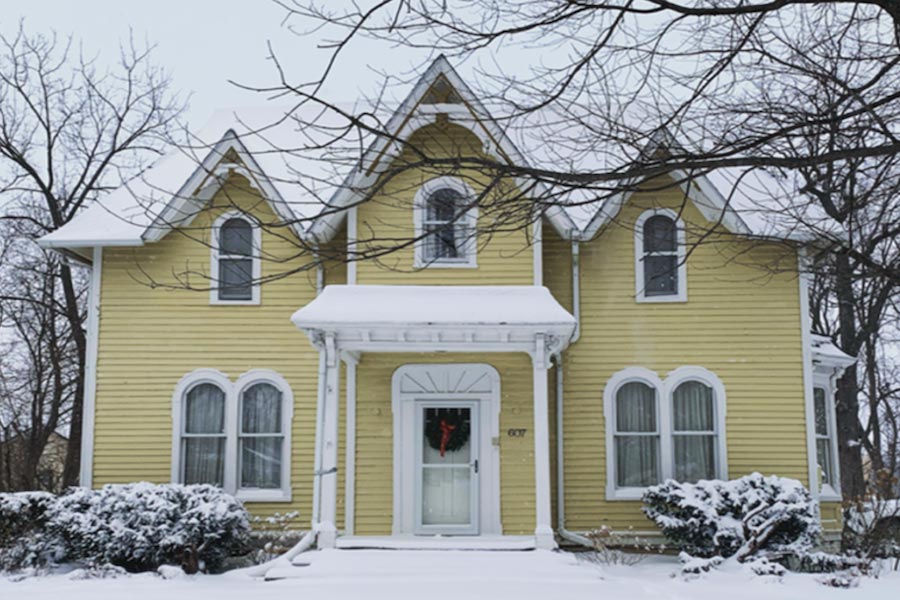Aug 16, 2023
What Is, and How to Achieve, Acoustical Comfort
In construction, there are three thoughts on how to reduce noises from entering the home: sealing, isolation, and absorption.
By: Randy Williams
How do you define comfort inside your home? Thermal comfort is the big one, not being too hot or too cold. Thermal comfort is one of the most important questions I ask during building investigations and energy audits. Having the right indoor humidity is another, not too damp and not too dry, which can affect not only comfort, but also human health and the durability of the structure. How about the visual aspect of comfort? It’s always nice to be in a room that “feels good” simply because of the way it was designed or how it is furnished. This discussion on comfort though is going to be on sound, the noises you experience inside the home, and how noise pollution can affect comfort.

Acoustical comfort is the result of limiting or restricting the level of noise that enters a space. The noise can come from the outside and/or inside. Sound moves on airwaves, rapid fluctuations in air pressure above and below atmospheric pressure. These fluctuations in air pressures can contact surfaces, reverberating through some. Air pressure differences caused by noise can also enter a home through holes in the air barrier or across holes and opening between spaces inside the home, such as under doors.
We measure sound in decibels (dB). A decibel is a unit of sound pressure or noise intensity. The smaller the number, the quieter the noise. For instance, 60 dB is the level of normal conversation. An impact wrench produces 103 dB, and an ambulance siren is about 120 dB. The loudest possible tone is 194 dB.
In construction, there are three thoughts on how to reduce noises from entering the home: sealing, isolation, and absorption. Sealing is simply closing air pathways leading into the home from the outside or between spaces inside the home, we are already performing air sealing duties in new construction. Isolation reduces noise from reverberating through building components by disconnecting surfaces. An example would be constructing a double stud wall assembly with an airspace or insulation between the two walls. Absorption, or dampening, would be the result of mass such as adding an additional layer of drywall, or constructing a structure out of concrete instead of wood or light steel framing. The heavier and denser products also reduce reverberation. In most cases, it’s best to utilize all these methods to reduce noise pollution.
Sound Transmission Class (STC) is a commonly used rating system that is based on a noise spectrum, which is focused on speech sounds. STC is the difference in noise when measured in dB inside the space where the noise originates compared to outside the source room. For example, you’re in a room with a radio playing your favorite building science podcast and the conversation is measured at 75 dB. You move to an adjoining room where the conversation is measured at 50 dB, the STC value would be 25. The higher the STC number, the better the assembly or product is at reducing sound transmission. An STC rating is a laboratory test that tests assemblies using sixteen different frequencies ranging from 125 HZ to 4000 HZ. The reduction is often due to the products and/or methods used in the wall, ceiling, or floor assembly. STC testing can also be performed on site, to confirm STC designed assemblies.
Outdoor-Indoor Transmission Class (OITC) is an additional rating used to measures outside noise sources in a lower frequency range, such as noise produced by car and trucks, aircraft, and trains with the noise source coming from the exterior of the structure. Outdoor-Indoor Transmission Class is measured the same as STC ratings, it is the reduction in dB across a product or assembly. The frequencies measured during testing range from 80 Hz to 4000 Hz with an emphasis on the lower frequencies. OITC is sometimes used by window manufacturers to show how well their products work at reducing lower frequency noise pollution.
What is a good STC or OITC score?
Both STC and OITC scores are the same, just measured at different frequencies. It’s the measured reduction in sound transmission across a product or assembly. An STC or OITC score of 25 means you will be able to hear quite conversation across the barrier. Moving up to 45 is where privacy begins; 60 is where real soundproofing begins. At a rating of 60, loud conversation across the barrier can only faintly or not at all heard.
Reducing Noises Across Assemblies
There are many products and combination of products used to reduce noise, either sourced from inside or outside a structure. There are also best practices in constructing these assemblies. It’s always easier to implement acoustical improvements to a home while building new, but some of the materials and methods can be added to an existing property as well.
Exterior

This is something we are already doing in new construction with many areas required to meet a specific air tightness metric. Air sealing existing structures will benefit not only acoustical comfort, but also thermal and humidity along with possibly improving indoor air quality and lower the building’s operational costs.
Using triple pane windows. It’s amazing how many benefits triple paned windows have for a home, though triple paned windows only add some benefit in noise reduction. Adding a storm window will have a similar result. A window that features laminated, thicker glass or larger spaces between panes will also help. Two different thicknesses of glass in the same window are sometimes used to help to reduce different frequencies of noise. Eliminating windows in rooms that need great sound proofing is the best option.
Exterior doors are another opening in a building’s shell that is hard to reduce noise moving through. Air sealing around the perimeter along with good door seals on all sides helps. A solid, heavy door will also reduce noise.
Adding continuous exterior insulation. Again, there are more benefits than just thermal comfort and operational cost reductions. Continuous exterior insulation can add both isolation and absorption properties to the wall assembly.
Interior
Air sealing interior walls, ceilings, and floors. Typically, we are air sealing to separate the outside from the inside, but using some of the methods for the air control layer will also help reduce noise transmission between inside spaces. A couple examples would be to plan that two electrical boxes in a wall do not share a common stud bay between rooms or using a minimal expanding foam insulation between the rough framing and door frame, much like you would do for an exterior window or door.

Properly design and install ducts and other air moving equipment. Air that moves evenly through ducts creates less turbulence, reducing noise. Transfer grills for allowing return air a pathway between spaces without the need of a dedicated return air duct in the room can also carry noise between spaces. Using jump ducts (transfer grills connected by a short run of flexible ducting) can help reduce noise but still allow air to move between spaces.
Mass vinyl is a product designed to be installed behind drywall. It’s a heavy vinyl that typically comes in .5 lb., 1 lb., and 2 lb. per square foot weight, the thicker the vinyl, the better the sound transmission reductions. The product is fastened directly to the wall and ceiling framing or laid on the subfloor before a finished floor is installed. Depending on the weight, the STC values will range from 10 to 50.
Insulating interior wall cavities. This has been a method for reducing sound transmission for decades. The method results in small improvements in noise reduction. Some insulations work better than others. Mineral wool, for instance, tends to be more dense than standard fiberglass, making it a better choice for acoustical comfort. Cavity insulation used for sound deadening needs to be installed just like thermal insulation, carefully cut, and fitted around everything in the wall to be effective. The photo shows a poor installation.

Using an acoustical sealant. This is an isolation or dampening method, reducing the connection between wall finishes and framing members or between two layers of drywall. Products like Green Glue noise proofing compound and sealants are popular choices.
Installing hat or resilient channel, another method to decouple finishes from framing. A hat channel has two legs for attachment and is typically fastened to framing using a clip, whereas a resilient channel only has one leg and is fastened directly to framing. Both run parallel to the framing members, reducing the number of connection points to the wall framing.
Adding a second layer of sheet rock is another method that can be very effective. Simply adding more mass.
Interior décor can also play a role in reducing sound transmission. Softer floor covering such as carpet with a heavy pad can reduce sound between floors, but also absorb and deflect sound sourced from inside the space where it is installed. Curtains, tapestries, and acoustic panels reducing the echo a room can experience from hard surfaces. Even furniture can help reduce noise inside a space.
Meeting Customer Expectations
Acoustical comfort is subjective; we all tolerate noise pollution differently. For example, some people can ignore the rumble of a forced air heating or cooling system, others are annoyed by that same sound. If I were still working as a contractor today, I would add a few questions regarding noise pollution to my initial conversation with a potential client.
Much like the other metrics that define human comfort, the customer’s expectations can be more easily met if they are planned ahead of time, rather than implementing change orders during the construction process or trying to make improvements after construction is completed. Experience has taught me that it’s always better to ask the question than assume the answer.
Resources
Several manufacturers and trade groups have published STC and some OITC scores for assemblies and products. A few of the resources I found while researching this article are:
Drywall Sound Rated Assemblies | National Gypsum®
acoustic-wall-assemblies-catalog-techincal-guide.pdf (rockwool.com)
Acoustic and Fire Assemblies | Product Selection Guide (certainteed.com)
https://free.bcpublications.ca/civix/document/id/public/bcbc2018/bcbc_2018dbp9rt





